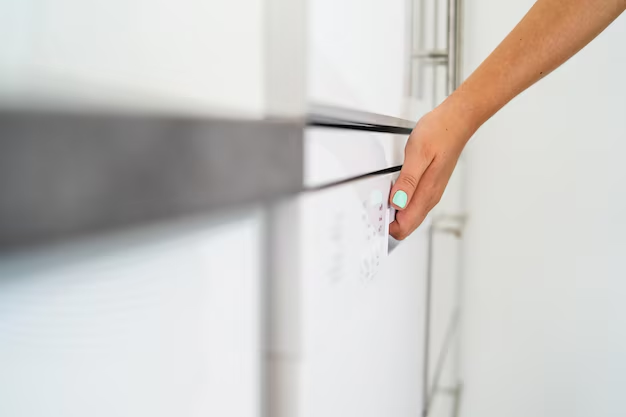Mastering Your LG Refrigerator: A Step-by-Step Guide to Resetting the Water Filter
Your LG refrigerator serves as a key player in maintaining the freshness and quality of your food and beverages. One crucial component is its water filter, which ensures that you always have access to clean and crisp-tasting water and ice. However, like any appliance detail, this filter needs regular maintenance. Knowing how to reset the water filter indicator once you’ve replaced it is vital for keeping your fridge running at peak performance. Let’s explore everything you need to know about resetting the water filter in your LG refrigerator.
Understanding the Importance of the Water Filter
Before diving into the reset process, it's important to understand why the water filter is an essential part of your refrigerator system. The water filter removes common contaminants found in your water supply, such as chlorine, pesticides, and heavy metals, providing you with fresh-tasting water and ice. Regularly replacing the water filter maintains this filtration efficiency and prevents potential clogs and damage to the system.
How Often Should You Replace Your Water Filter?
Most refrigerator manufacturers, including LG, recommend replacing the water filter every six months. However, the frequency might depend on your water quality and usage levels. If your water has a high level of contaminants or your household has heavy water consumption, you may need to change the filter more often.
Resetting the Water Filter Indicator: A Step-by-step Guide
Once you’ve replaced the water filter, resetting the indicator is crucial to keep track of its usage. Here's how you can do it effectively:
Step 1: Locate the Reset Button
The reset button location can vary depending on the model of your LG refrigerator, but typically you’ll find it on either the control panel or inside the fridge near the filter housing.
Step 2: Press and Hold
Once you've located the button, press and hold it for about 3-5 seconds. The light indicating the filter status should reset, changing from red to green. This color change confirms the system recognizes the new filter.
Step 3: Test the Indicator
After resetting, it's always a good practice to check if the indicator has been reset successfully. If the light hasn't changed, repeat the process, ensuring you are holding the button for the correct amount of time.
Troubleshooting the Reset
If the indicator doesn't reset, there could be a few reasons. Here are some tips to help you resolve common issues:
Ensure Proper Installation: Check if the new filter is installed correctly, as an improper installation can prevent the reset.
Power Cycling: Sometimes, turning off the refrigerator for a minute and turning it back on can reset unseen electronic hitches causing the issue.
Consult the Manual: If issues persist, referring to the user manual can provide model-specific instructions or troubleshooting tips.
Optimizing Filter Performance
While knowing how to reset the filter indicator is essential, optimizing the water filter performance is equally important for long-term reliability and efficiency.
Quality of Replacement Filters
Using high-quality replacement filters is crucial for maintaining water quality. Consider using OEM (Original Equipment Manufacturer) filters for compatibility and reliability.
Water Flow and Temperature
Ensuring the water flowing into your refrigerator is at the right temperature and pressure can also enhance filter performance. Most LG refrigerators work best with water pressure between 20-120 PSI and at temperatures between 33-100°F.
Why Is the Reset Important and What are the Benefits?
Resetting your LG refrigerator’s water filter indicator not only helps track filter usage but also ensures consistent water quality. Here are the benefits of regular resets:
Accurate Tracking: It helps keep track of when the next filter change is due, avoiding unnecessary replacements or overdue changes.
Maintained Water Quality: Regular resets ensure that the water filter is running effectively, providing consistently clean and great-tasting water.
Enhanced Appliance Efficiency: Proper maintenance of the filter system can prevent clogs and reduce strain on the refrigerator, potentially extending its lifespan.
Frequently Asked Questions
What Happens If I Don’t Reset the Indicator?
If the indicator isn’t reset, you might misjudge the usage period of your water filter. This might cause the filter to be used past its effective lifespan, resulting in reduced water quality and potential system strains.
Can I Use Non-OEM Filters?
While non-OEM filters are available, they might not fit perfectly, and their filtration quality could be inconsistent. It’s recommended to use OEM filters for guaranteed compatibility and filtration quality.
What Are the Signs That a Filter Needs Changing?
Apart from the indicator, common signs include an unpleasant taste or odor in water, reduced water flow, and unusual noises from the water dispenser.
Practical Tips for Maximizing the Life of Your Water Filter
Regularly Flush the System: After replacing the filter, run a few gallons of water through to flush out any air bubbles or carbon particles.
Monitor Water Quality: Keep an eye on any changes in taste or odor, which might indicate a diminishing filter performance.
Maintain Refrigerator Cleanliness: Regularly clean the interiors of your refrigerator and remove any debris near the filter housing to prevent contamination.
Summary of Key Points
Here’s a quick look at what you’ve learned about managing your LG fridge’s water filter system:
- 🔄 Regular Replacement: Change filters every six months or as necessary based on usage and water quality.
- 🔧 Resetting Process: Locate the button, press, and hold for a successful reset.
- ⚙️ Troubleshooting: Check installation, power cycle if needed, and consult manuals for persistent issues.
- 🚰 Optimize Performance: Use OEM filters and ensure proper water flow, temperature, and pressure.
Adhering to these steps ensures that your LG refrigerator runs optimally, providing your family with fresh, clean water and maintaining the appliance's longevity. Remember, effective maintenance not only preserves water quality but also protects your investment in your refrigerator. By mastering these practices, you'll enjoy the seamless operation of your appliance with minimal disruptions.
